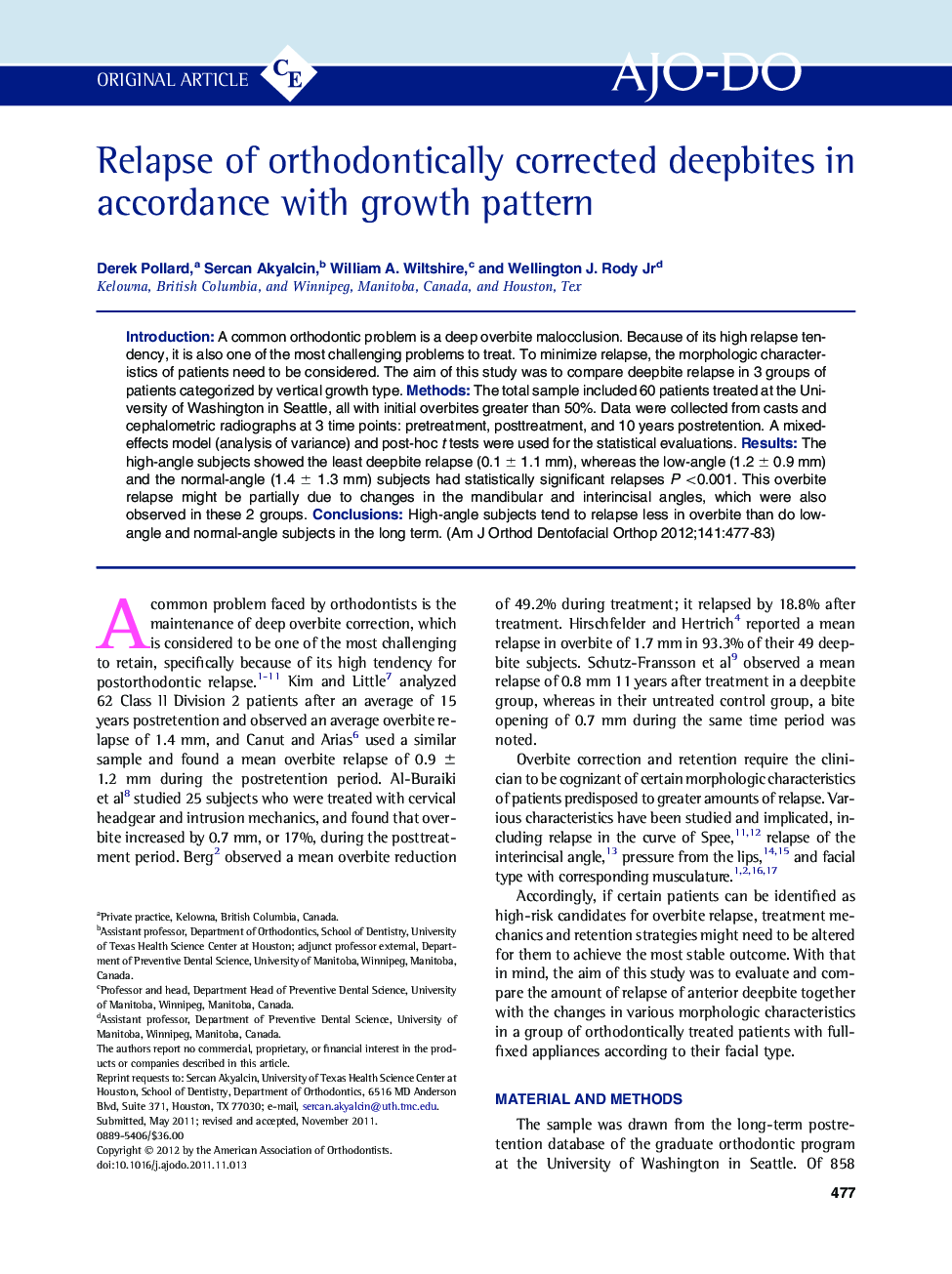| Article ID | Journal | Published Year | Pages | File Type |
|---|---|---|---|---|
| 3117427 | American Journal of Orthodontics and Dentofacial Orthopedics | 2012 | 7 Pages |
IntroductionA common orthodontic problem is a deep overbite malocclusion. Because of its high relapse tendency, it is also one of the most challenging problems to treat. To minimize relapse, the morphologic characteristics of patients need to be considered. The aim of this study was to compare deepbite relapse in 3 groups of patients categorized by vertical growth type.MethodsThe total sample included 60 patients treated at the University of Washington in Seattle, all with initial overbites greater than 50%. Data were collected from casts and cephalometric radiographs at 3 time points: pretreatment, posttreatment, and 10 years postretention. A mixed-effects model (analysis of variance) and post-hoc t tests were used for the statistical evaluations.ResultsThe high-angle subjects showed the least deepbite relapse (0.1 ± 1.1 mm), whereas the low-angle (1.2 ± 0.9 mm) and the normal-angle (1.4 ± 1.3 mm) subjects had statistically significant relapses P <0.001. This overbite relapse might be partially due to changes in the mandibular and interincisal angles, which were also observed in these 2 groups.ConclusionsHigh-angle subjects tend to relapse less in overbite than do low-angle and normal-angle subjects in the long term.
